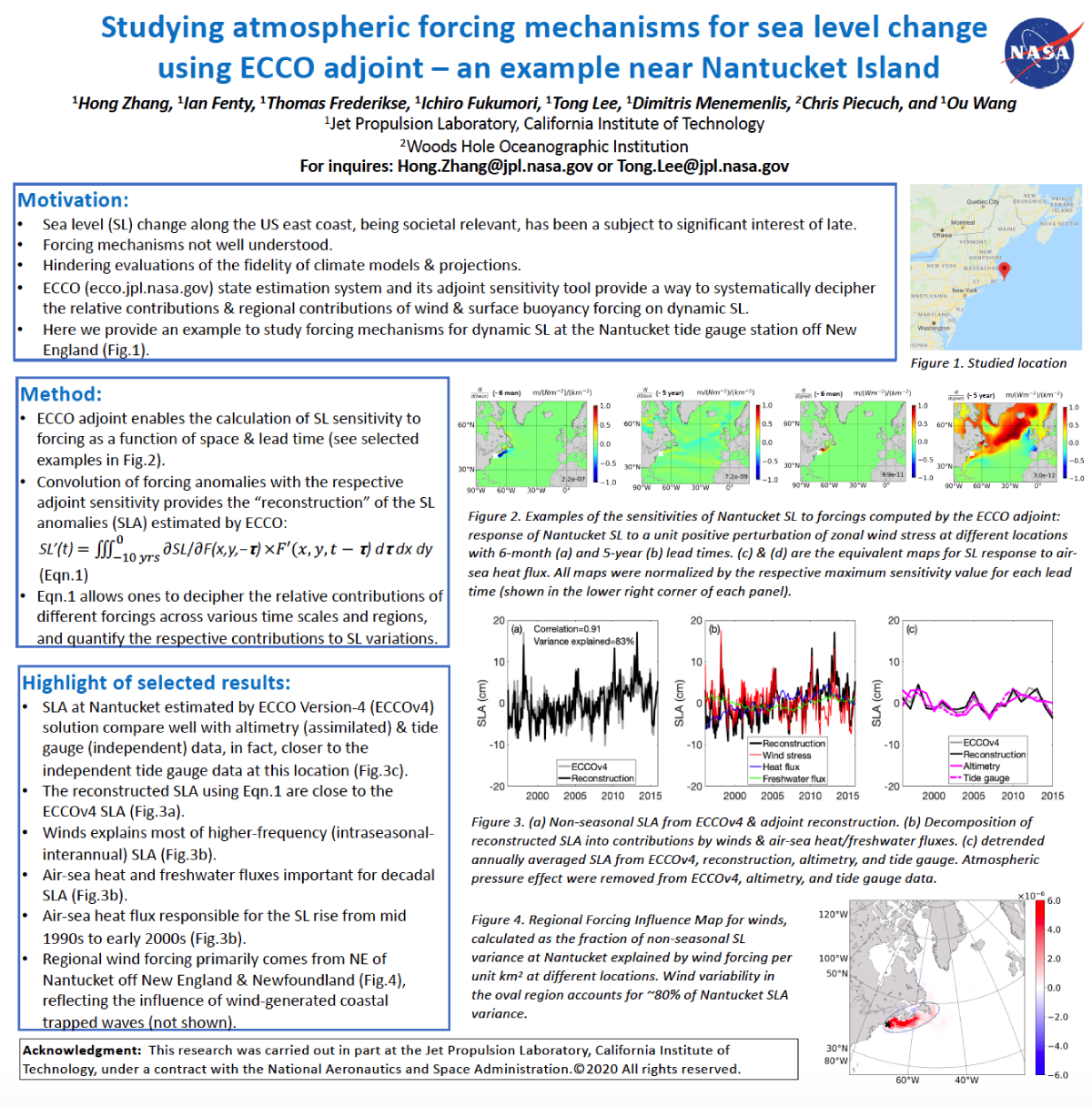Zhang, H., Fenty, I.G., Fukumori, I., Lee, T., Menemenlis, D., and Wang, O. (2020)
Presented at:
Ocean Sciences Meeting 2020Sea level change has high societal relevance, especially for low-lying and flood-vulnerable coastal regions. The atmospheric forcing mechanisms for sea level change in coastal oceans off the US east coast are not adequately understood. Here we use a global configuration of the Massachusetts Institute of Technology general circulation model (MITgcm) and its adjoint under the framework of the Estimating the Circulation and Climate of the Ocean (ECCO) project to study the relative contributions of wind stress, air-sea heat flux, and evaporation-precipitation on US East Coast sea level variations from sub-seasonal to interannual time scales. We project the anomalies of various atmospheric forcings onto the corresponding adjoint sensitivity of sea level to these forcings through a mathematical convolution over a moving, decade-long time window. The convolution successfully reconstructed the sea level variations simulated by the forward model. The successful reconstruction gives us the confidence to investigate the relative contributions of different forcings on different time scales and in different regions to US East Coast sea level variations using partial convolution in space and time. This effort demonstrated the feasibility of using this method to study longer-term sea level changes of the US East Coast, as well as sea level changes in other coastal regions around the world ocean.


